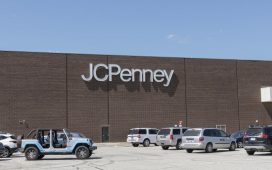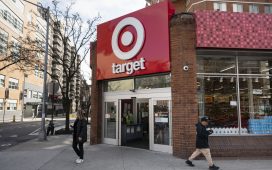Receive free UK retail industry updates
We’ll send you a myFT Daily Digest email rounding up the latest UK retail industry news every morning.
A pioneering rewards card allowed Tesco to overtake rival J Sainsbury nearly 30 years ago. On Tuesday it was the latter’s turn to credit a loyalty scheme for rising market share. Simon Roberts, chief executive of the UK supermarket group, said its recent “Nectar Prices” initiative helped fuel a return to volume growth last quarter.
Critics accuse supermarkets of using inflation as an excuse to charge higher prices. A shrewder suspicion is that the cost of living crisis makes it easier for store chains to harvest data via loyalty schemes.
Nectar offers eye-catching savings. A jar of Nescafé Gold Blend instant coffee is less than half price, for instance. That is infuriating for those who dislike sharing data. But they are a shrinking minority. Since April, the 11mn-strong ranks of Nectar users have swollen nearly a tenth.
The benefits to Sainsbury go beyond value signalling. It can use data from the loyalty scheme to sell tailored ads on its app – and later show its effectiveness. Sainsbury’s claims a marketing return on investment of £2-£4 for every £1 invested. It expects Nectar 360, its digital advertising arm, to bring in an additional £90mn profit in the five years to 2026.
The data also supports tailored promotions. Price sensitive customers receive fewer, deeper discounts. Loyal customers are encouraged to try a broader range of discounts. Algorithms decide the generosity of the discounts based on a customer’s potential value. The offers on up to 10 items a week can amount to as much as £200 a year.
Sainsbury’s operating profit margins of 3.3 per cent are slightly below pre-pandemic levels. That partly reflects recent price increases that were 0.9 percentage point lower than the sector average, according to UBS. The likes of Aldi, which eschews a loyalty scheme in favour of across-the-board discounts, are still cheaper than Sainsbury’s. But the gap is narrowing.
The group has been regaining its competitive edge. Its shares are up a fifth this year, more than twice as much as Tesco. The stock is priced at 13 times forward earnings, a tenth higher than its 10-year average.
Investors fret — and shoppers dream — of a grocery price war. But personalised loyalty card discounts make price comparison harder. The success of loyalty schemes makes a sector-wide food fight less likely.
Lex recommends the FT’s Due Diligence newsletter, a curated briefing on the world of mergers and acquisitions. Click here to sign up.










